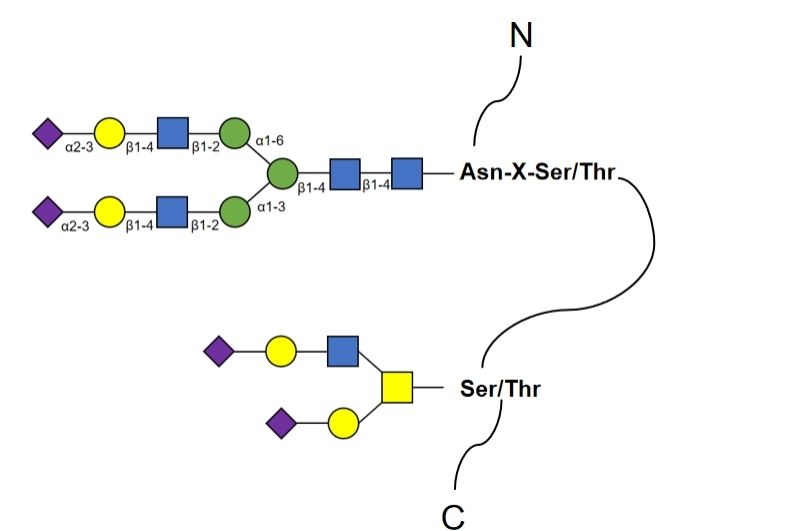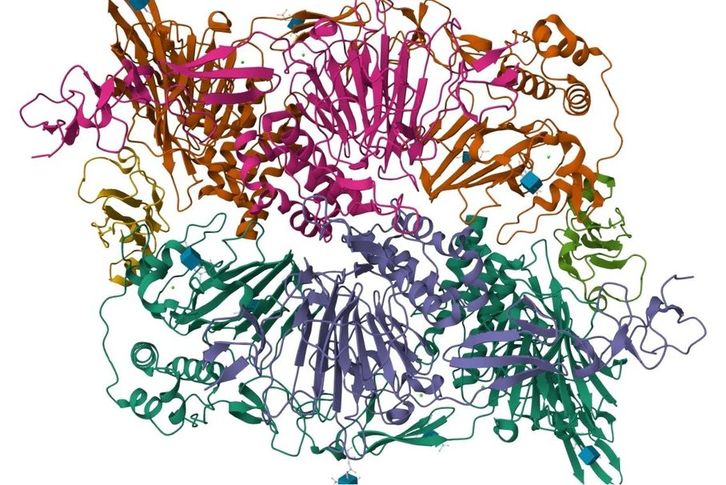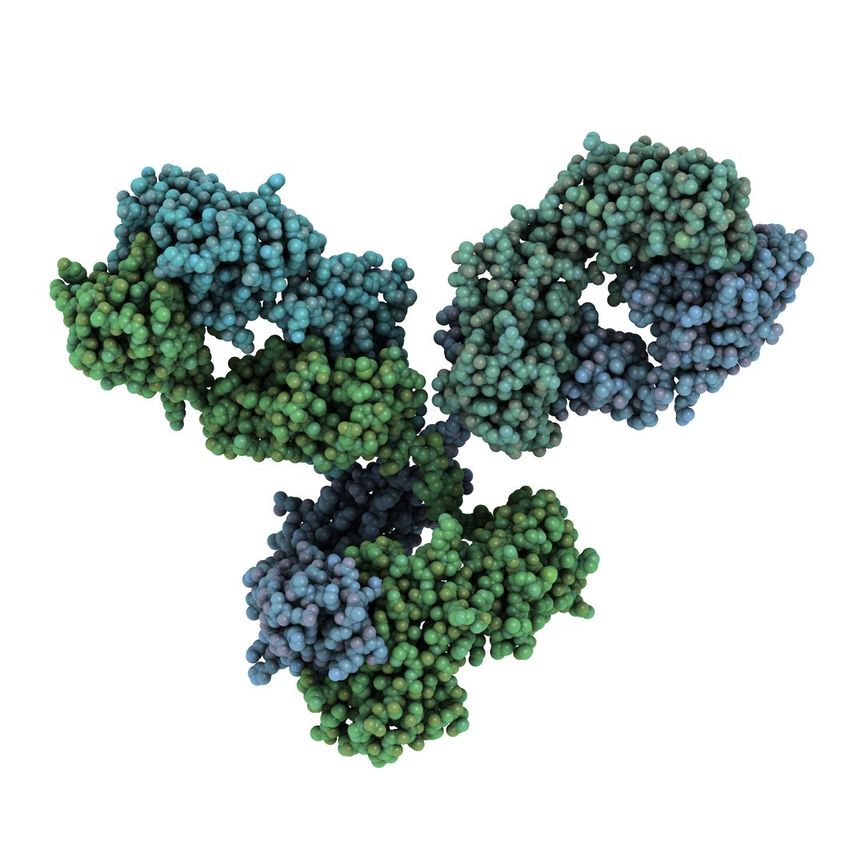Glycoinformatics-assisted Disease Glycomics Analysis Service
Glycoinformatics Expertise: Unveiling the Complexity of Disease Glycomics
Glycomics analysis helps researchers to understand the mechanism of glycan action in organisms, metabolic pathways, and the interaction relationship with other biomolecules. Disease glycomics analysis, on the other hand, is based on glycomics and is aimed at the study of the occurrence and development of diseases and other aspects. Through disease glycomics analysis, the relationship between diseases and glycometabolism can be studied, and the connection between diseases and abnormal glycometabolism can be found. CD BioGlyco leverages our extensive research expertise in glycoinformatics to offer expert analysis of disease glycomics with the assistance of glycoinformatics.
Firstly, we analyze the amino acid sequences of proteins in conjunction with the information provided by glycoinformatics to predict possible glycosylation sites on target proteins. Glycosylation of these sites affects the function of the protein. Secondly, statistical analysis of protein sequences by our experts provides insight into the amino acid profile around glycosylation sites. This statistical information can be used to study the pattern and function of glycosylation. Thirdly, we simulate the process of glycosylation through mathematical modeling and predict the structure of the glycan that may be synthesized. These models help clients better understand the mechanism and regulation of glycosylation.
With mass spectrometry, our experts help you determine the sequence and structure of disease-related glycan groups. This allows rapid and accurate analysis of the structure of the glycan groups, providing important experimental data for your disease glycomics research. Additionally, we assist you in your research on the early identification of diseases by examining established glycan structures and aiding in the prediction of glycan markers linked to specific illnesses.

Our glycoinformatics-assisted disease glycomics analysis services include but are not limited to the following:
CD BioGlyco provides a high-quality glycoinformatics-assisted cancer glycomics analysis service, which is dedicated to helping researchers understand the changes in tumor glycometabolism and its mechanism of action in tumorigenesis and progression. Through advanced mass spectrometry and chromatography technologies as well as glycoinformatics analysis, we analyze glycan molecules in tumor samples and discover potential tumor biomarkers. Our tumor glycomics services include but are not limited to:
We offer neuronal disease glycomics analysis services, using glycoinformatics technology to investigate the alterations in glycometabolism among neuronal cells and related cells, as well as their mechanisms of action in disease onset and progression. By employing advanced glycoinformatics technology and mass spectrometry analysis, we identify abnormal glycan molecular changes in neurological diseases. Our glycoinformatics-assisted neuronal diseases glycomics analysis services include but are not limited to:
 Fig.1 Detection of anti-carbohydrate antibodies (ACAs) associated with type 1 diabetes phenotypes, differs between non-progressors, progressors, and controls. (Tran, et al., 2022)
Fig.1 Detection of anti-carbohydrate antibodies (ACAs) associated with type 1 diabetes phenotypes, differs between non-progressors, progressors, and controls. (Tran, et al., 2022)
Publication
Technology: Glycosylation analysis, glycomics, glycan biomarker prediction, glycan structure analysis, and glycan-based gene expression analysis
Journal: PLoS Computational Biology
IF: 4.3
Published: 2008
Results: This article focuses on the application of glycoinformatics in glycomics research. The article mentions six main research areas: glycosylation analysis, glycomics, glycan marker prediction, glycan structure analysis, glycan gene expression analysis, and glycan structure mining. Among them, glycan structure analysis, glycan gene expression analysis, and glycan structure mining are the research hotspots in informatics. The article also introduces some specific methods and tools, such as the prediction of glycosylation binding sites on proteins, statistical analysis of amino acid sequences around glycosylation binding sites, mathematical modeling of glycosylation processes, and mass spectrometry data analysis. In addition, the article mentions nuclear methods and multinuclear models used in glycan marker prediction, as well as tree structure comparison algorithms and glycosyl mass matrices used in glycan structure analysis.
 Fig.2 A tree-like structure representing an N-linked glycan. (Aoki-Kinoshita, 2008)
Fig.2 A tree-like structure representing an N-linked glycan. (Aoki-Kinoshita, 2008)
Applications
- The analysis of disease glycomics data is used to combine with glycoinformatics techniques by researchers to create disease prediction models. These models can be used for early assessment of disease risk.
- Glycoinformatics-assisted disease glycomics analysis technology is used in disease mechanism studies to identify and analyze disease-associated glycomic biomarkers and to explore their mechanisms of action in the disease process.
- Glycoinformatics-assisted disease glycomics analysis is used in drug development and evaluation to study the interactions between drugs and glycan biomarkers and to assess the effects of drugs on glycometabolism.
Advantages
- Systematic analysis: Combined with glycoinformatics technology, we systematically analyze the glycomics data in disease samples to reveal the changes in glycometabolism and related biological mechanisms of disease development.
- Integrative perspective: We integrate multidisciplinary knowledge to explore the relationship between disease and glycometabolism from an integrative perspective, helping to unravel the multifactorial and complex mechanisms of disease.
- Data visualization and interpretation: Our glycoinformatics-assisted disease glycomics analysis not only provides the results of data analysis but also intuitively presents complex glycomics data, helping researchers better understand the data and results through data visualization and interpretation.
Frequently Asked Questions
- What is the relationship between disease glycomics analysis and glycometabolism analysis?
- Disease glycomics analysis identifies glycan biomarkers in disease samples, which may be disease-related glycan metabolites or regulators. Therefore, the results of disease glycomics analysis provide important clues and a basis for glycometabolism analysis.
- How to further explore the mechanisms of disease glycomics and glycometabolism in disease?
- Further exploration of the role of disease glycomics and glycometabolism in disease occurrence and development requires the comprehensive use of multiple research methods and technologies. It is recommended to carry out cell and animal model experiments, gene editing technology, glycoinformatics analysis, and other studies to further explore the regulatory mechanisms of disease glycometabolism.
With a focus on innovation and customization, CD BioGlyco strives to provide effective glycoinformatics-assisted disease glycomics analysis solutions according to our client's detailed requirements. If you are interested in further details, please feel free to contact us.
References
- Aoki-Kinoshita, K.F. An introduction to bioinformatics for glycomics research. PLoS Computational Biology. 2008, 4(5): e1000075.
- Tran, P.M.H.; et al. Use of a glycomics array to establish the anti-carbohydrate antibody repertoire in type 1 diabetes. Nature Communications. 2022, 13(1): 6527.
For research use only. Not intended for any diagnostic use.
Quick Links
Related Services



 Fig.1 Detection of anti-carbohydrate antibodies (ACAs) associated with type 1 diabetes phenotypes, differs between non-progressors, progressors, and controls. (Tran, et al., 2022)
Fig.1 Detection of anti-carbohydrate antibodies (ACAs) associated with type 1 diabetes phenotypes, differs between non-progressors, progressors, and controls. (Tran, et al., 2022) Fig.2 A tree-like structure representing an N-linked glycan. (Aoki-Kinoshita, 2008)
Fig.2 A tree-like structure representing an N-linked glycan. (Aoki-Kinoshita, 2008)


